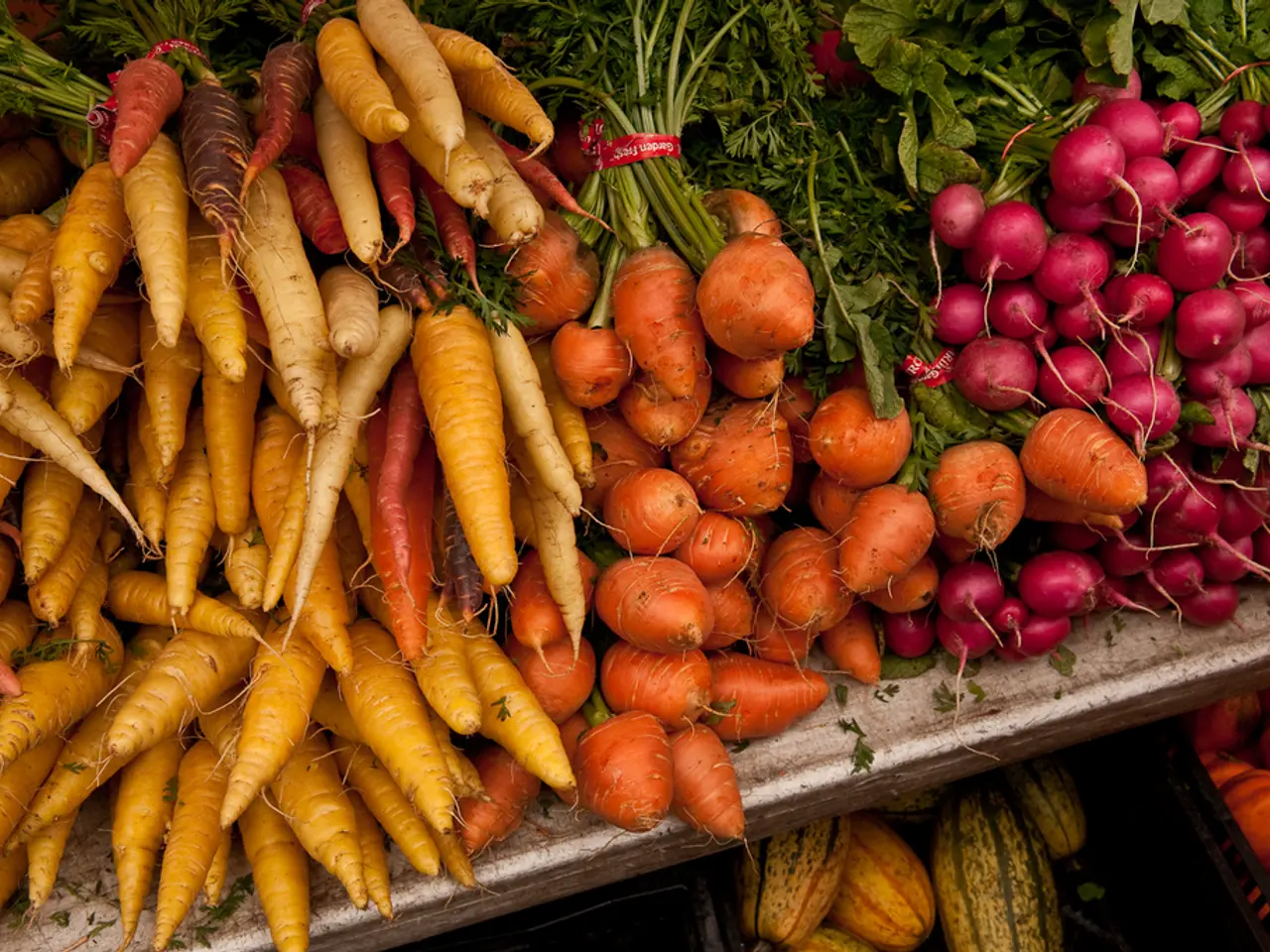Steps for Growing a Vegetable Garden: Detailed Guidance
In the world of gardening, planning is key. Whether you're a seasoned green thumb or a budding horticulturist, having a well-structured vegetable garden can make all the difference. One tool that's gaining popularity is the GrowVeg garden planning software.
This innovative software allows you to design your garden to scale, selecting every structure in the garden, and adding vegetables by dragging and dropping them into each bed. It simplifies the vegetable growing plans by incorporating all parts of the garden, helping plan each part of the garden, season after season.
But planning a vegetable garden isn't just about arranging plants. It's also about understanding the needs of your garden and the plants themselves. For instance, the type of soil in a garden impacts what can be grown there. Clay soils require aeration, while sandy soils require nutrient-rich additives.
The plan for a vegetable garden should include paths for walking without stepping on plants. And don't forget about crop rotation - a crucial aspect of planning a vegetable garden. Each growing group is rotated counterclockwise each year to prevent the build-up of pests and diseases.
In the vegetable garden plan, Group One includes root crops like potatoes, carrots, parsnips, celeriac, and beetroot, which are planted in the spring after the last frost. Group Two is the legumes, planted after the last frost in spring. When Group One has been harvested in the fall, trenches are dug in the growing position of the beans and peas, filled with kitchen waste, fish, blood, and bone fertilizer, and covered with soil.
Group Three is the brassica (cruciferous vegetables) group, planted in early spring. This group follows the legumes, and there should be no need to add any food to the soil. Group Four is made up of two groups: alliums and cucurbits. The alliums can be planted in late summer to early spring, and the cucurbits can be planted in early spring.
A vegetable garden doesn't have to be huge to be productive. Raised beds and container gardening are good options for limited space. And remember, some plants take up more room than others, so it's important to consider space limitations when planning a garden.
The position of a garden is also important for optimal light exposure. A South-facing slope is the warmest, while North-facing gardens may be cast in shade for months during the winter. Western-exposure gardens may be battered by wind and wet weather.
Learning how to plan and plant a vegetable garden is important for improving soil nutrients through annual crop rotation. And growing your own vegetables and fruits assures that you are getting fresh, organic foods to fuel your body.
So, whether you're just starting out or looking to improve your current garden, consider using a tool like GrowVeg to help you plan and manage your vegetable garden effectively. Happy gardening!
Read also:
- Wawa avian tests positive for West Nile disease
- Individuals suffering from ailments such as arthritis or asthma could potentially secure £30,000 in financial aid for home renovations at no cost to them.
- The market for Kraft Lignin is projected to increase at a rate of 7.2% each year until 2034.
- Revising hair care practices with cynorrhodon extracts for addressing hair fragility





